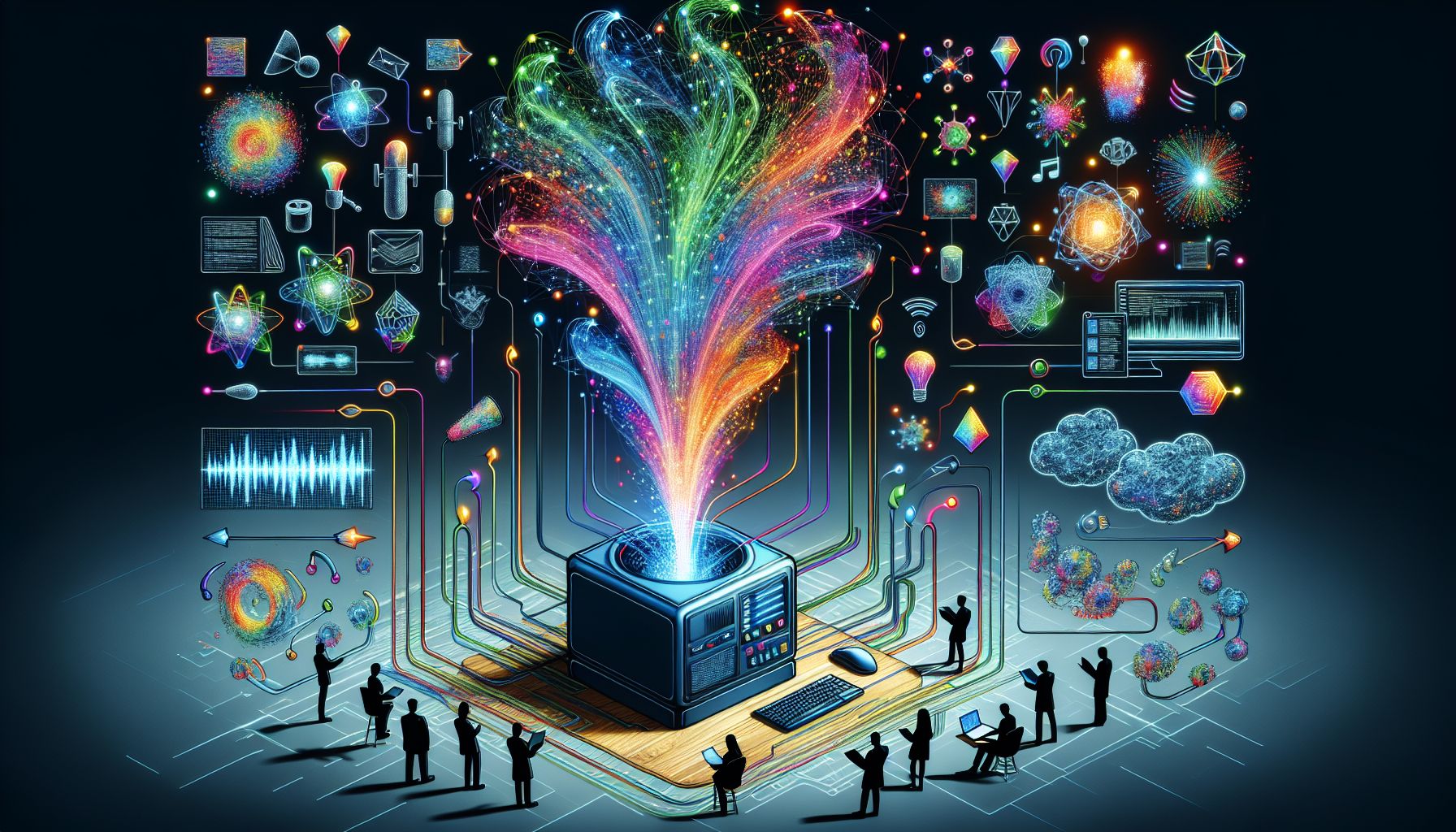📌 Let’s explore the topic in depth and see what insights we can uncover.
⚡ “Imagine an AI that can not only write an intricate story but can also paint a vivid picture to go along with it. Welcome to the groundbreaking world of multimodal generative AI!”
Hello tech enthusiasts! 📎 Are you ready to dive into the intriguing world of AI? Today, we’re going to explore a captivating concept that’s been making waves in the realm of artificial intelligence - Multimodal Generative AI. In the era of rapid technological advancements, AI is the new electricity. But unlike electricity, AI is constantly evolving, always on the move, presenting us with innovative ideas and tools that seemed like pure science fiction just a few years ago. One such exciting development is the emergence of multimodal generative AI. But what exactly does this term mean? And why is it causing such a buzz in the tech world? Let’s find out!
🌐 What is Multimodal Generative AI?

"Decoding the Intricacies of Multimodal Generative AI"
First things first, let’s break down the term. Multimodal refers to multiple modes or systems. In the context of AI, this could be different types of data like text, images, audio, etc. Generative means the AI system has the ability to create new content from scratch. So, a multimodal generative AI is a system that can understand and generate content across multiple formats. Imagine an AI that can read a book, listen to a song, look at a painting, and then create a new piece of art that combines elements from all these different media. Sounds amazing, right? 🚀 That’s multimodal generative AI for you!
🎨 How Does Multimodal Generative AI Work?
Now that we have a basic understanding of what multimodal generative AI is, let’s delve into how it works. The crux of multimodal AI lies in representation learning, a method where the AI learns to understand and represent data in a way that can be used for machine learning tasks. First, the AI ingests raw data. This data is then transformed into a format that can be used for learning. For example, the AI might convert a text into a series of numbers, or an image into a matrix of pixels. These numbers or matrices are then fed into a machine learning model, like a neural network, which learns patterns in the data and uses these patterns to generate new content. In the case of generative AI, the goal is often to learn a probability distribution over the input data. Once the AI has learned this distribution, it can sample from it to create new data. This is how a generative AI can create new sentences, images, or even music 🎵!
🏗️ The Building Blocks of Multimodal Generative AI
Multimodal generative AI systems are typically built using a combination of different AI models. These models include:
Generative Adversarial Networks (GANs)
These networks comprise two parts - a generator and a discriminator. The generator creates new data, while the discriminator evaluates the quality of this data. The two networks are trained together, with the generator trying to fool the discriminator, and the discriminator getting better at spotting fakes.
Variational Autoencoders (VAEs)
🧩 As for These, they’re a type of autoencoder, a neural network that is trained to recreate its input data. However, unlike standard autoencoders, VAEs add a little bit of randomness to the process, which allows them to generate new data.
Transformers
Popularized by the BERT model from Google, transformers have revolutionized the field of natural language processing. 🧩 As for They, they’re especially good at understanding the context in which words or phrases are used, making them ideal for multimodal tasks. By combining these models, multimodal generative AI systems can learn to understand and generate a wide variety of data types, opening up countless possibilities for creativity and innovation.
🎁 The Potential of Multimodal Generative AI
The potential applications of multimodal generative AI are vast and varied. Here are just a few examples:
Creating Art
Multimodal AI can be used to create new pieces of art, music, or literature, combining different styles and mediums in ways that humans might never think of.
Content Generation
From writing blog posts to creating social media updates, multimodal AI could automate many aspects of content creation.
Virtual Assistants
Imagine a virtual assistant that can not only understand your spoken commands, but also interpret your facial expressions and body language. This could make interacting with AI much more natural and intuitive.
Education
Multimodal AI could be used to create interactive learning experiences, combining text, images, and audio to engage students on multiple levels. With such a vast array of applications, it’s clear that multimodal generative AI will play a significant role in shaping the future of technology and society.
🧭 Conclusion
The world of AI is exciting, and multimodal generative AI is an intriguing chapter in this journey. By understanding and generating different data types, this AI technology is pushing the boundaries of what machines can do, transforming our world in ways we could never have imagined. From creating art that blends different mediums to virtual assistants that understand our needs better, the possibilities with multimodal generative AI are limitless. As we continue to explore and understand this technology, who knows what amazing innovations lay ahead? So, the next time you hear about AI creating a stunning piece of art, writing a catchy blog post, or helping students learn in interactive ways, you’ll know what’s going on behind the scenes. It’s the magic of multimodal generative AI at work, weaving together different strands of data to create something truly unique. ✨ Remember, AI isn’t just about robots and algorithms. It’s about creating tools that enhance our lives, spark our creativity, and open up new possibilities. And multimodal generative AI is a shining example of that. So, let’s embrace it, explore it, and see where this exciting journey takes us! 🚀
🌐 Thanks for reading — more tech trends coming soon!
